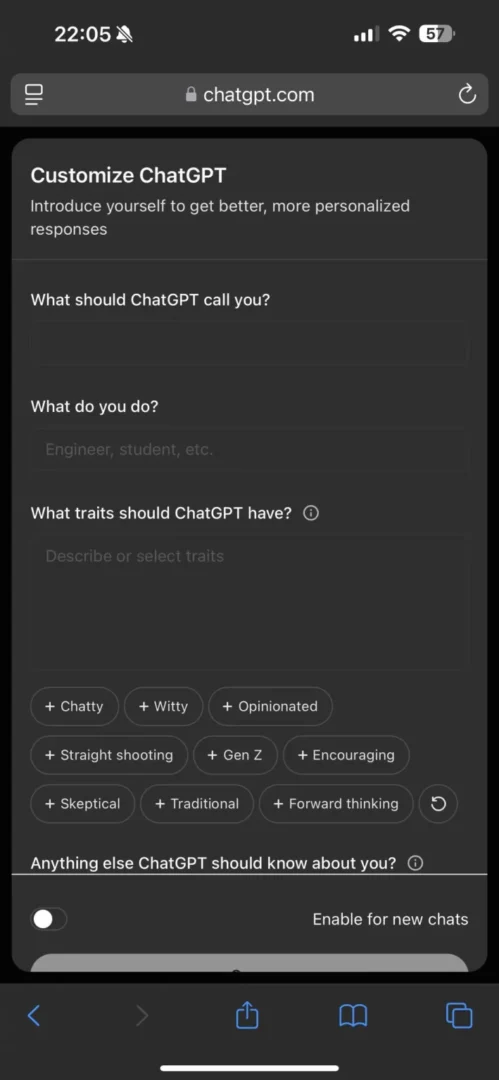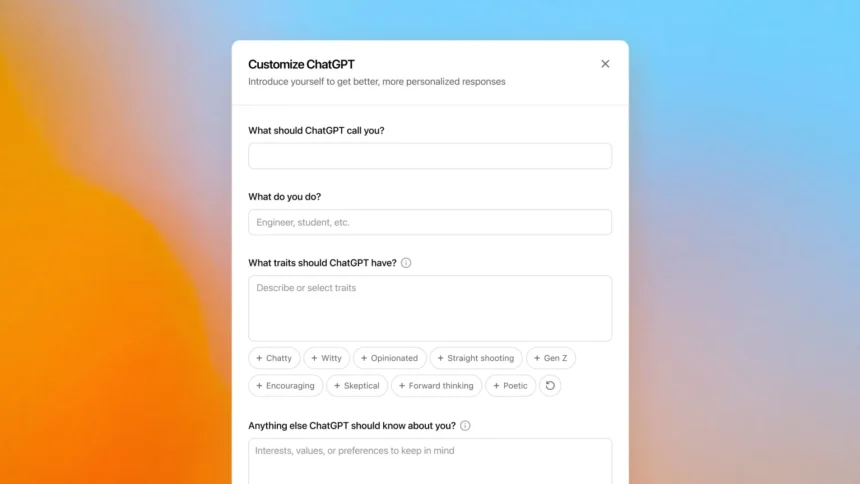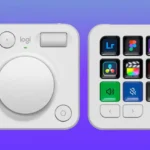OpenAI has taken personalization to the next level by introducing an exciting feature that allows users to assign specific traits to ChatGPT, its popular AI-powered chatbot. This update promises to redefine how users interact with ChatGPT, offering a more tailored and engaging experience.
A New Era of Personalization
On Friday, OpenAI announced the rollout of a revamped custom instructions menu for ChatGPT. This new interface includes expanded options to customize the chatbot’s style, tone, and personality traits, making conversations more dynamic and user-centric. The feature is initially being launched on ChatGPT.com and the Windows desktop app, with plans to extend it to mobile and MacOS desktop apps in the coming weeks.
However, it’s worth noting that this feature will not be immediately available to users in the European Union, Norway, Iceland, Liechtenstein, and Switzerland, according to OpenAI. The company has not provided a timeline for when these regions will gain access.
What’s New in the Custom Instructions Menu?
Some users recently reported spotting a refreshed custom instructions menu, hinting at new fields and functionalities. OpenAI has now officially confirmed these updates. Users can now specify:
- A preferred name or nickname for the chatbot to use.
- Their profession or role, to enable context-aware responses.
- Additional personal details they’d like the AI to consider during interactions.
- Desired traits for the chatbot, such as “Chatty,” “Encouraging,” or “Gen Z.”
This level of customization allows users to shape ChatGPT’s personality to better suit their preferences, whether they want a lighthearted conversationalist or a more formal and professional tone.
More Than Just a Memory
While the new customization options may sound similar to ChatGPT’s memory feature, they serve different purposes. The memory feature allows the chatbot to retain specific details about users or conversations across sessions—if explicitly permitted. In contrast, the revamped traits menu focuses on tailoring ChatGPT’s conversational style and tone in real-time.
For example, users can now “introduce themselves” to ChatGPT via the updated menu. By sharing information such as their profession or hobbies, they can receive more personalized and relevant responses instantly, without relying on memory storage.

How It Works: A Friendly Face for Prompt Engineering
Under the hood, this feature leverages the power of prompt engineering. Essentially, the custom instructions guide ChatGPT’s responses by providing it with a tailored set of user-defined parameters. While this functionality existed in previous versions, the new interface simplifies the process, making it more accessible to a wider audience. Now, anyone can effortlessly customize their interactions without needing advanced technical knowledge.
OpenAI has also confirmed that it continues to apply moderation to custom instructions to ensure they align with its terms of use, safeguarding against misuse.
Why This Matters
OpenAI’s latest move reflects its commitment to refining ChatGPT in response to its growing user base. With over 300 million weekly users, personalization is becoming a crucial factor in maintaining engagement and satisfaction. By allowing users to mold the chatbot’s personality, OpenAI is addressing a key demand for more human-like, relatable interactions.
Looking Ahead
This update is part of a broader strategy by OpenAI to enhance ChatGPT’s capabilities and user experience. In recent months, the company has introduced features like live web search and the “Canvas” interface, designed specifically for writing and coding projects. The new traits feature further expands ChatGPT’s versatility, ensuring it remains a leader in the AI chatbot market.
What’s Next for Users?
As this feature rolls out, users will have the opportunity to explore and experiment with ChatGPT’s customizable traits. Imagine having a chatbot that not only remembers your name but also adapts its tone to suit your mood or professional needs. Whether you’re a student looking for a study buddy, a professional seeking a helpful assistant, or simply someone who enjoys chatting with a friendly AI, the possibilities are endless.
OpenAI’s announcement signals a new chapter in the evolution of AI-powered interactions. By giving users the ability to shape ChatGPT’s personality, the company is empowering people to make AI their own—a move that could transform the way we engage with technology forever. So, what personality will you give your ChatGPT? The choice is yours.










